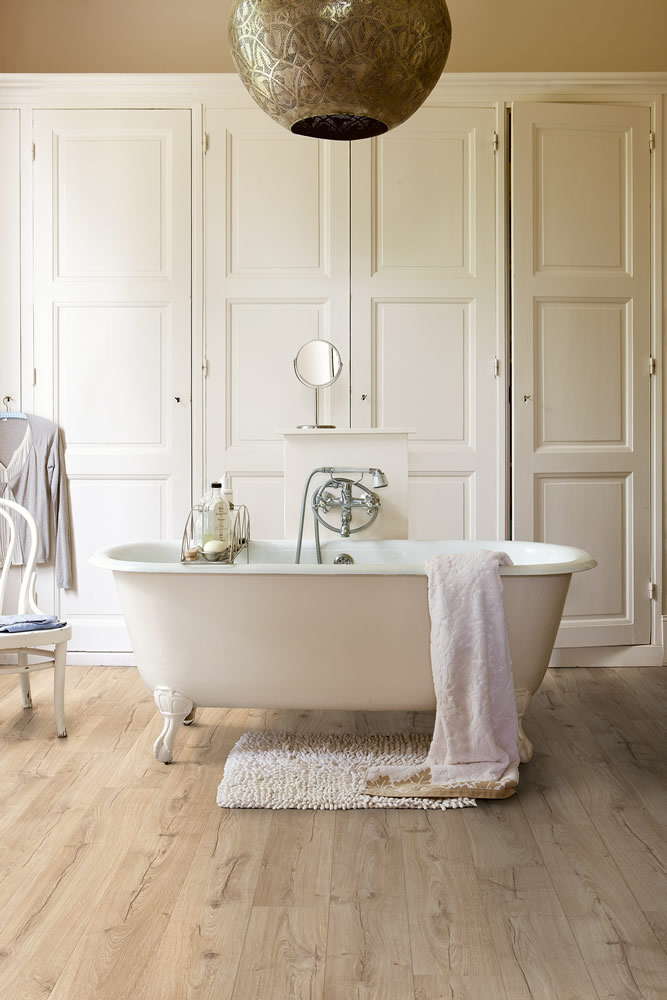It may be the smallest room in the house, but the bathroom throws up some of the biggest questions when it comes to flooring.
Not only does it have to stand up to lots of traffic, it also needs to be waterproof, slip-resistant, easy to clean and, unless you're considering carpet (actually, let's not go there - no-one has carpet in a bathroom anymore, right?), it also needs to be warm underfoot.
Stone and wood are by far the most popular looks to complement a sleek white bathroom suite. And I say ‘looks’ because two of the top options in bathroom flooring have all the aesthetic qualities of these fantastic natural materials - patina, grain, textures and colours - but without any of the downsides.
Laminate flooring and luxury vinyl tiles, or LVT as they're often called, are great alternatives to real stone and wood, and offer a wealth of options for your bathroom floor. Here we take a look at some of the things to consider when deciding which is right for your home:
Get the look without the worry
Got your heart set on that flagstone floor but are concerned it will be too hard and cold? Or perhaps you like the natural look of real wood, but with young children creating tidal waves at bathtime you're worried about leaks?
It is possible to get the bold style statement of stone or the warmth of wood without compromising on performance.
Forget cold stone tiles that are slippery, heavy and prone to cracking, and opt for stone effect LVT to get that clean, sharp finish you're after.
All bathroom flooring needs to stand up to spills and splashes, but that doesn't mean the oak floor you've been dreaming of is a complete no-no. Waterproof wood effect laminate offers all the luxury in a product that's ideal for the bathroom.
Micro-bevelled edges and textured finishes add to the authentic look of LVT and laminate, and will leave your friends and family wondering if it's the real thing.
Laying it on the line
When it comes to laminate flooring, the built-in locking mechanism means confident DIY-ers could take it on themselves. LVT traditionally has to be glued down and is best left to a professional fitter, however, there are some ranges which also incorporate a convenient locking system.
With both floors, it's important to provide a good base, and you can find advice on subfloors in the Help & Advice Centre.
There's also the option to banish those cold feet for good, as LVT and laminate are suitable for laying over most underfloor heating systems.
So which is best?
It really is a case of personal preference. Laminate has the edge if you're looking for an environmentally-friendly product, as it's made from tiny pieces of recycled wood pulp. While LVT might not have the green credentials, it's PVC-based material means it's incredibly hard wearing and often comes with a longer warranty as a result.
The LVT also scores higher in the waterproof stakes, but laminate is still a good choice so long as you mop up any spills as quickly as possible - unless you've opted for the waterproof range that is.
If it's a stone effect you're after, LVT has a wide range of options, from slate and limestone to concrete and marble, alongside a similarly diverse range of wood-effect tiles. Laminate is primarily available in wood finishes, although there are some stone options - and if you can't decide, there's even a concrete wood design which combines the two.
Read more about the pros and cons of laminate and LVT.
Whichever option you choose, you can be confident that both will stand up to family life while also providing a stylish floor for your bathroom.



